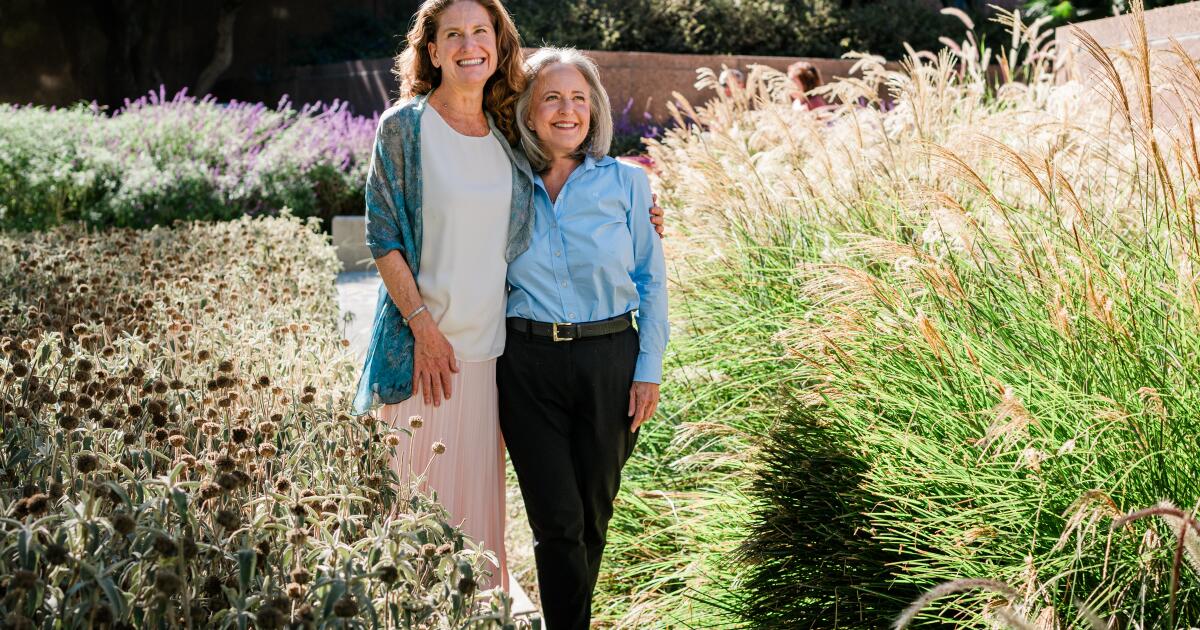Wendy Garen, the recently retired president and chief executive of the Ralph M. Parsons Foundation, likes to say problems that seem to defy solutions — homelessness, injustice, child welfare issues — are too big for philanthropy to solve.
“We’re pocket dust,” she says, referring not just to the roughly $20 million the Parsons Foundation gives away each year to groups like the Coalition for Responsible Community Development, but to philanthropy dollars across Los Angeles.
While Garen believes that progressive philanthropies such as the Weingart Foundation and the California Endowment are right about the need to support marginalized communities by fixing broken public systems, directing unrestricted funds to community activists was a nonstarter at Parsons.
Instead, the foundation shifted to the public side of the equation, getting philanthropic dollars inside government bureaucracy to seed innovation.
The result was a union of the public and the private: Los Angeles County’s Center for Strategic Partnerships, within the county’s Chief Executive Office.
Garen — along with Fred Ali, former president of the Weingart Foundation, and Christine Essel, president and CEO of Southern California Grantmakers, which represents hundreds of regional foundations and corporate funders — was instrumental in the creation of the center, which opened in 2016. The Annenberg Foundation provided early support and continues to do so.
In the seven years that philanthropies have been working directly with county staff, $41.5 million in private funds have supported a wide range of public-private initiatives, according to Kate Anderson, executive director of the partnership center.
Before the center’s creation, private philanthropies thought the county considered them a cash machine, says Joe Nicchitta, L.A. County’s chief operating officer — and the county believed philanthropies only funded what they wanted, regardless of what the county needed.
“There is now a true partnership between L.A. County and philanthropy,” he says.
Kate Anderson of the county Center for Strategic Partnerships says $41.5 million in private funding has gone to a variety of public-private initiatives since philanthropies began working with county staff seven years ago.
(Jason Armond / Los Angeles Times)
Once mutual trust was established, Anderson says, private funds could move quickly to wherever the county needed them most — becoming particularly helpful in times of crisis. During the pandemic, the center fast-tracked private funds to pay for county services including child care for emergency workers and Wi-Fi hotspots for students struggling to connect remotely with their teachers.
It’s a model, Anderson says, that other local governments are considering.
One of the big-ticket projects is the county Department of Youth Development, created in June 2022 with a $50.6-million budget for programs to keep at-risk youth out of juvenile jails — especially out from under the authority of the county Probation Department.
The Probation Department has struggled for decades to safely care for young offenders. Juvenile halls have been plagued by staffing issues, drug overdoses, fights and beatings. Some facilities were stripped of their certifications to operate. Earlier this year, the county reopened one juvenile hall, and a few days later, a gun was found inside.
The strong correlation between the population of youths caught up in the juvenile justice system and those involved in L.A. County’s foster-care system has made improving foster care a top priority for Garen.
“About 1,200 kids a year emancipate from foster care,” she says. “We know from research that, within two years, half of those kids are homeless. … Two years after that, half of those children are permanently off track, broken.”
Earlier this year, The Times reported that attorneys from four law firms had filed a complaint saying the state and the county were “shirking their responsibility to ensure foster youths between the ages of 16 and 21 have a safe and stable place to live.”
When youths age out of foster care, “we throw them in the river only to fish them out half-drowned downstream,” says Garen. “Can’t we just not throw them in the river?”
Research from the Annie E. Casey Foundation shows that foster youths do better when they are placed with family rather than strangers, Garen says. With support from the partnership center, the county now prioritizes family placements, hiring a dedicated team to track down relatives of children in the system who might foster them.
In the meantime, local philanthropists have been working on an ambitious project to help support youths who age out of the foster system.
Last year, Garen brought Anderson together with her counterparts at Weingart, the Conrad N. Hilton Foundation, Ballmer Group and other philanthropies for a brainstorming session.
The result: a $750-million proposal to create housing with wrap-around services, jointly funded by L.A. County and philanthropic foundations.
“The foundations listened to the voices of foster youth,” says David Ambroz, an advocate for those in foster care, who supports the project.
This story originally appeared on LA Times

